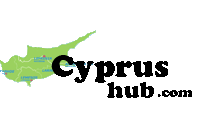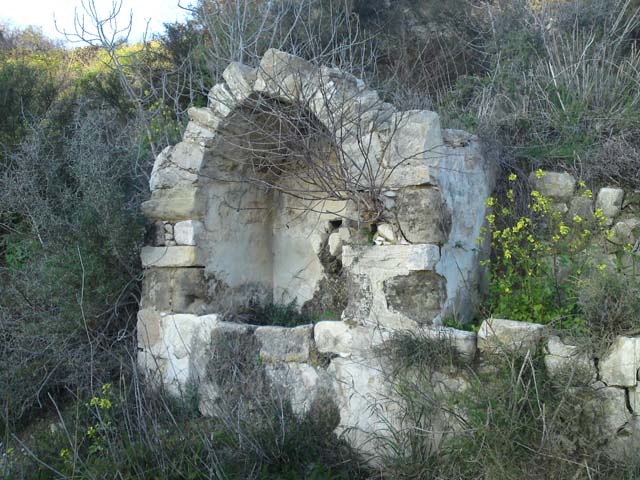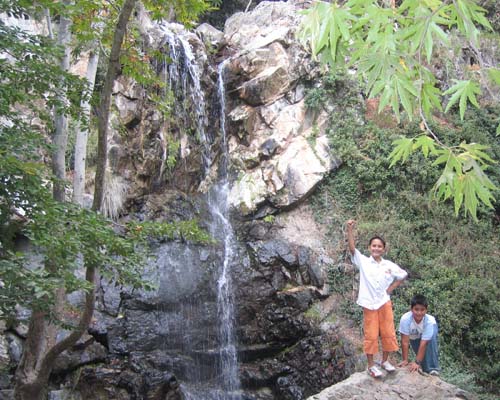Sites and Monuments
Archbishop's Palace
A religious, national and political monument, the Old Archbishop’s Palace is an 18th century two - storey building in the heart of Lefkosia (Nicosia) that is closely associated with modern Cypriot history. Next to it is the new Archbishop’s Palace, a two - storey stone building in Neo - Byzantine style housing the offices of the archdiocese and the residence of the archbishop. It was built by Archbishop Makarios III between 1956 and 1960 and also houses the Byzantine Museum and the Library of the Archbishopric. Since the completion of the new Archbishopric, the Old Archbishop’s Palace has housed the Folk Art Museum and the National Struggle Museum.
| Region | Lefkosia |
| Address: | Plateia Archiepiskopou Kyprianou, Lefkosia |
| Operating Period: | All year round |
Panagia Chrysospiliotissa Church
The cave church of Our Lady of the Golden Cave on the outskirts of Lefkosia (Nicosia) on the road to Dheftera is a picturesque example of a type of Levantine monastery or hermitage uncommon in Cyprus but typical of ancient Levantine Christianity. It consists of a natural sandstone cave enlarged to form an apse, nave, narthex and vestries, lovingly tended by women from the village. It was once completely decorated, but all the plaster has fallen away except in the sanctuary and even that has been defaced. The church houses a rain - inducingicon of the Virgin, invoked in times of drought. A religious fair is held near the church on August 15th, name day of Panagia.
| Region | Lefkosia |
| Address: | Deftera, Lefkosia |
| Operating Period: | All year round |
The House of Hadjigeorgakis Kornesios
The house was built in 1793 with local bloc-cut sandstone and is a two-storey building. The monogram of the owner and the date of its erection can be seen on a marble tablet inside the entrance. The architectural plan of the building in the form of a Greek Δ surrounds a central garden with a fountain and a private bathhouse (hammam) which is comprised of three rooms. On the ground floor the servants’ quarters and the kitchen were situated. Roofed wooden stairs with a stone base lead to the entrance hall on the first floor from the courtyard. The official reception room and the living areas communicated with this reception hall. The official reception room (the onda), at the end of the east wing, differs from the other rooms with its exceptional carved wooden, gilded and painted decoration, which liken it to other official reception rooms in many mansions of the Ottoman Empire. The building was awarded the Europa Nostra Award in 1988.
| Address: | Patriarchou Grigoriou 20, Lefkosia |
| Operating Hours: | Monday & Sunday: closed, Tuesday, Wednesday & Friday: 08:30 - 15:30, Thursday: 08:30 - 17:00, Saturday: 09:30 - 15:30, closed on Public Holidays. |
| Operating Period: | All year round |
| Entrance Fee: | 1,71Euro |
The Medieval walls of Lefkosia
The first walls surrounding Lefkosia (Nicosia) in the 14th century were built by the Franks and enclosed a much larger area than the 16th Venetian Walls that still surround the old town. When the Venetians occupied Cyprus, they decided to demolish the Frankish Walls because they were old and did not offer adequate defence against new weapons such as artillery. The Frankish Walls were also too big to be manned by the Venetian army and too close to the hills in the east and southeast of the city.
| Region | Lefkosia |
| Address: | Lefkosia |
Hamam Omeriye
The Omeriye Hamam is in the old town of Lefkosia (Nicosia), next to the Omeriye Mosque and not far from the Archbishop’s Palace. It was built in 1570 - 71 as a donation by Lala Mustafa Pasha to the city after the island fell to the Ottomans. The bath complex or hamam was dedicated to the Caliph Omar and the area became known as Omeriye. The entrance on the south side of the building led first into a small courtyard and then into the reception - hall. This has a vaulted roof and an octagonal cistern in the middle. Behind that hall, there are two rooms of medium temperature and behind these the warm, vaulted room. The hamam is still in use and after its recent restoration has become a favourite place for relaxation in Lefkosia. In 2006 it received the Europa Nostra prize for the Conservation of Architectural Heritage.
| Address: | Tyllirias Square 8, Lefkosia |
| Operating Hours: | Monday: 09:00 - 21:00 (for couples) Tuesday, Thursday, Saturday: 09:00 - 21:00 (for men) Wednesday, Friday, Sunday: 09:00 - 21:00 (for women) for group tours call in advance |
| Operating Period: | All year round |
| Website: | www.hamambaths.com |
Central Municipal Market
The Municipal Market of Lefkosia (Nicosia) is also known as the Market of the old Town Hall because this is where the offices of the Town Hall used to be. When the municipal authorities moved to the modern Town Hall, the area became the city’s main municipal market. It functions on a daily basis, but is particularly busy on Saturdays when farmers and producers from the entire district gather here to sell their goods. Besides fresh fruit and vegetables, the market all sells a wide range of other goods, including homemade bread, olives, herbal teas, halloumi and other cheese and salami.
| Address: | Lefkosia |
| Operating Hours: | Monday, Tuesday, Thursday, Friday: 06:00 - 15:00 |
| Operating Period: | All year round |
Holy Cross Catholic Church
Situated at Pafos Gate just within the old walled city of Lefkosia (Nicosia), the Holy Cross Catholic Church dates back to 1900 and caters for the capital’s Roman Catholic community – both local and foreign. It was built on the site of an older church dedicated to the Holy Cross that was constructed in 1642 and remained in use until the end of the 19th century before it was pulled down to make room for the current building. The first stone of the present church was blessed on April 8, 1900 and the church was inaugurated in 1902. The cost was partly covered by the Royal Family of Spain and partly by the Franciscan Friars.
| Address: | Lefkosia |
| Email: | holcross@logos.cy.net |
| Website: | www.cypruscatholicchurch.org |
Faneromeni Church
Built in 1872 within the old city walls, this used to be the largest church in Lefkosia (Nicosia). The marble mausoleum to the east of the church contains the relics of the bishops and priests executed by the Ottomans in 1821.
| Address: | Onasagorou Street, Lefkosia |
| Operating Hours: | All year round |
| Entrance Fee: | Free entrance |


